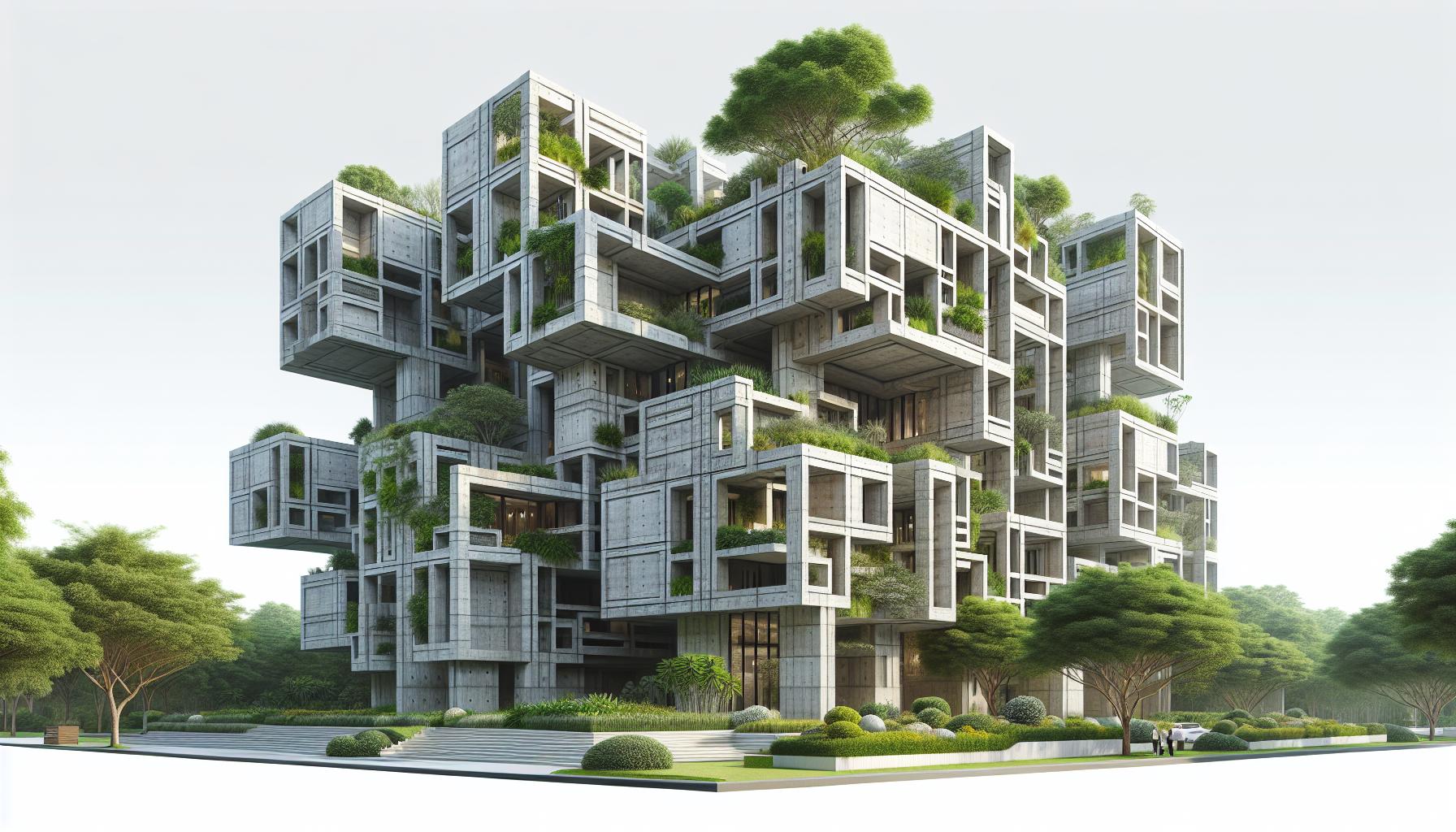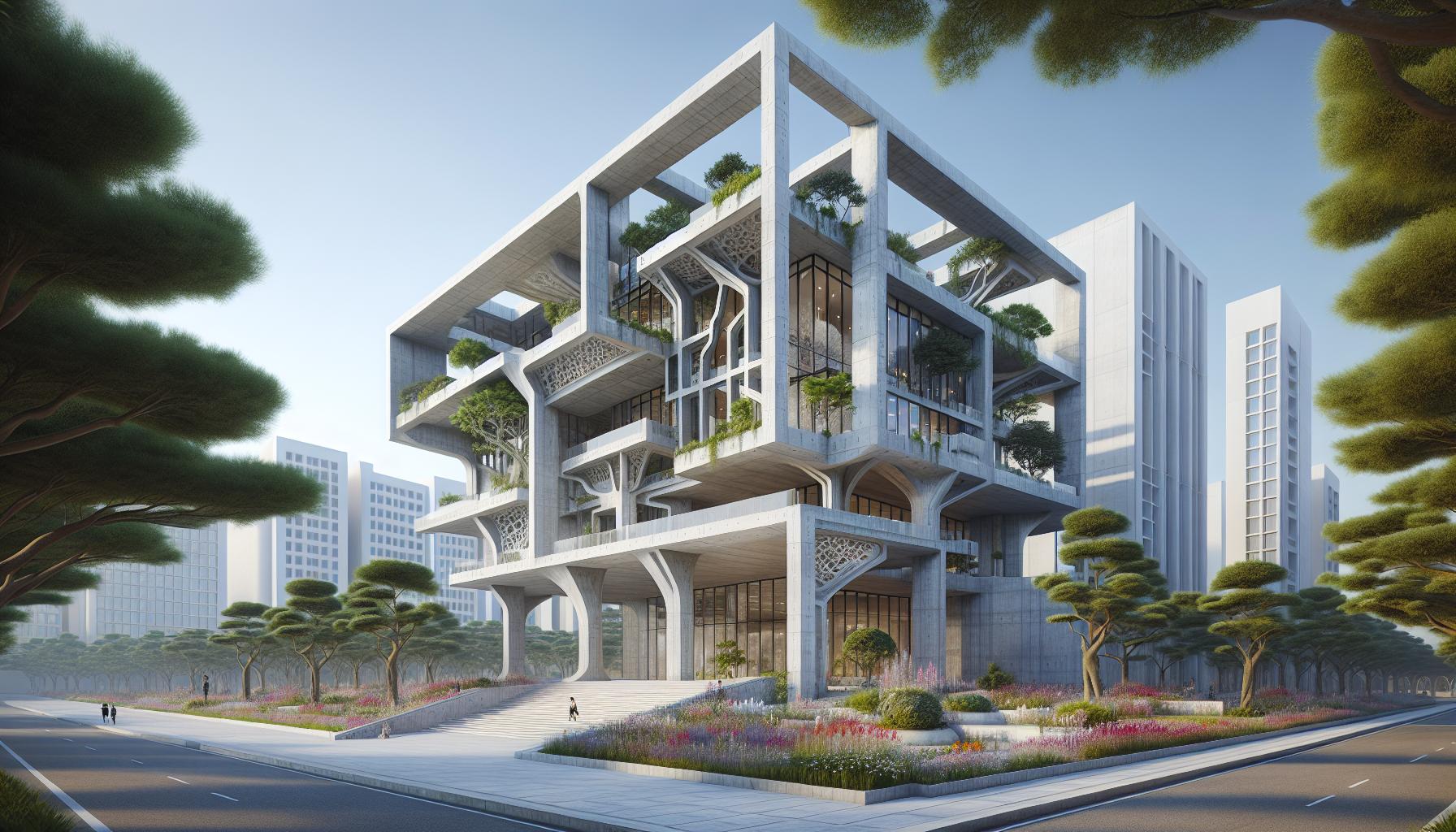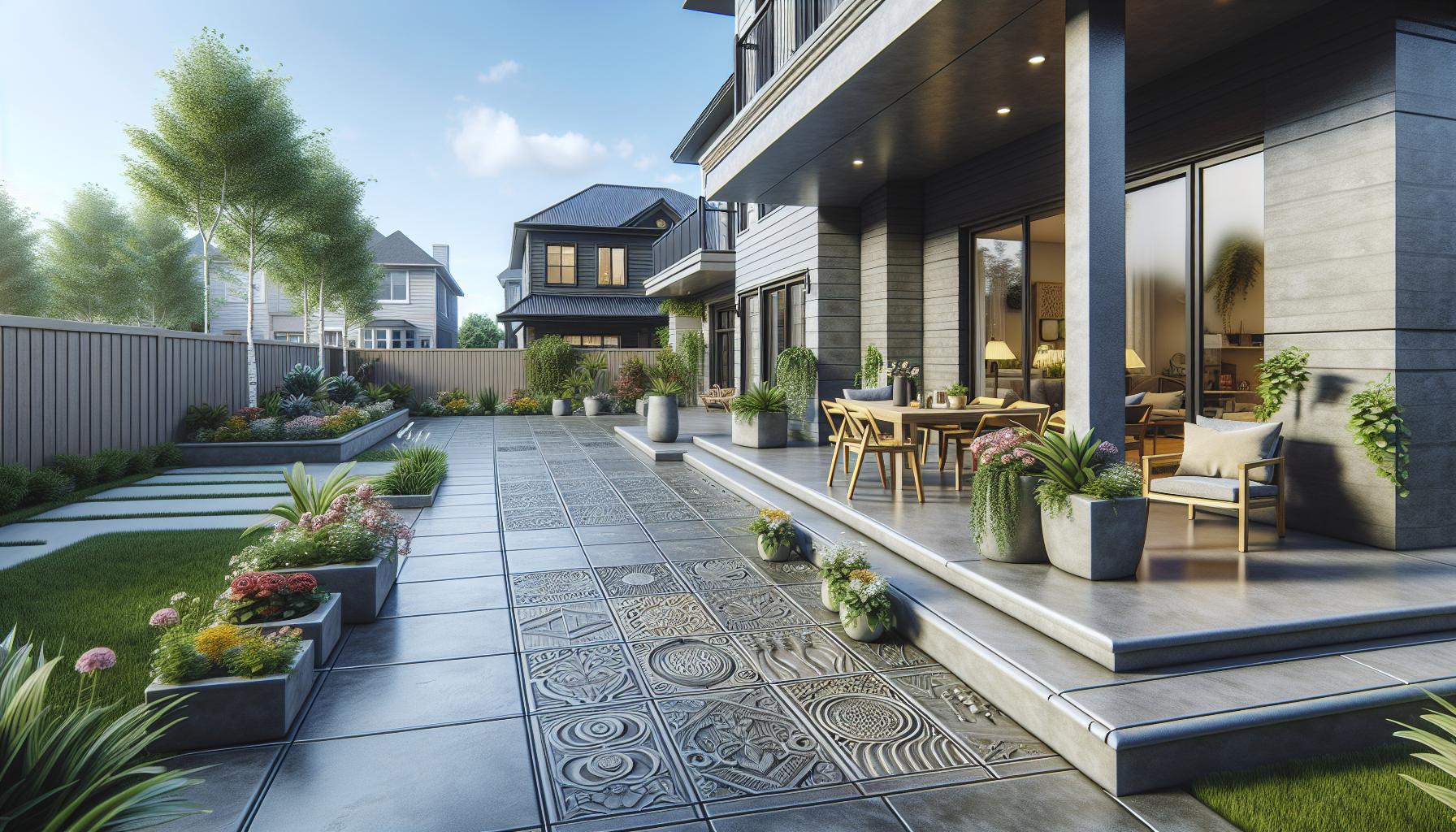Concrete isn’t just for sidewalks and parking lots anymore. It’s the unsung hero of architectural design, turning dull structures into stunning works of art. With its versatility and durability, architectural concrete can transform any space from drab to fab faster than you can say “reinforced slab.”
Architectural Concrete Design
Architectural concrete design represents a vital aspect of modern construction. Designers utilize concrete for its aesthetic qualities alongside its structural capabilities. This approach redefines concrete’s conventional roles, allowing it to serve as a visual and tactile element in buildings.
Functionality remains key in architectural concrete. Buildings often incorporate various finishes, colors, and textures to create unique appearances. Innovative techniques, such as stamping and staining, transform ordinary surfaces into eye-catching designs.
Sustainability also plays a significant part in contemporary architectural practices. Many architects favor recycled materials, reducing environmental impact without sacrificing quality. This trend aligns with a broader movement toward greener building solutions.
Concrete’s inherent durability ensures longevity in architectural applications. Structures withstand weather, fire, and pests, making concrete an ideal choice for long-term investments. Many buildings utilize reinforced concrete to enhance strength and load-bearing capacities further.
The seamless integration of technology enriches architectural concrete design. Digital modeling now allows architects to visualize complex forms, pushing the limits of creativity. This use of technology facilitates the production of intricate geometric shapes that were once impractical.
Collaboration among architects, engineers, and contractors enhances project outcomes. Each party contributes specialized knowledge, ensuring a cohesive and informed design approach. This teamwork helps realize the full potential of architectural concrete, with results that captivate and inspire.
Adoption of architectural concrete continues to grow. As urban environments expand, the demand for versatile and appealing materials rises. Architectural concrete design stands at the forefront of this evolution, offering innovative solutions tailored to modern needs.
Benefits of Architectural Concrete Design

Architectural concrete design offers numerous advantages, enhancing both functionality and aesthetics in construction. These benefits include aesthetic appeal and durability, highlighting its importance in modern architectural practices.
Aesthetic Appeal
Versatile in application, architectural concrete allows for diverse designs and finishes. Unique textures, vibrant colors, and innovative techniques elevate the visual interest of structures. Stamping, staining, and polishing enhance traditional concrete into artistic expressions. Designers can create stunning facades that blend seamlessly with the environment while maintaining individuality. Architectural concrete adds elegance to both residential and commercial properties by providing an extensive range of design options. Uniting functionality with beauty, it enhances any project’s overall impact.
Durability and Longevity
Concrete excels in durability, making it a preferred material for long-lasting structures. Exceptional resistance to weathering, moisture, and pests ensures minimal maintenance. Life cycle costs remain low due to reduced repairs and replacements over time. In architectural contexts, it stands up to heavy use and environmental stressors, contributing to a building’s longevity. Architects prioritize this material for its strength and stability, knowing it extends lifespan significantly. Concrete’s ability to maintain its integrity under various conditions solidifies its role as a dependable choice in architectural design.
Techniques in Architectural Concrete Design

Architectural concrete design employs various techniques to achieve desired aesthetics and functionality. Formwork innovations and surface treatments play pivotal roles in transforming concrete into stunning design elements.
Formwork Innovations
Inventive formwork techniques enhance the casting process and influence the final appearance of concrete structures. Using materials like plastic and metal allows for precise shapes and patterns, providing flexibility for complex designs. Modular forms facilitate efficient construction, enabling rapid assembly and disassembly. Complex geometries become achievable with advanced formwork systems, promoting creative freedom. Digital fabrication techniques, such as 3D printing, allow for custom forms tailored to specific architectural needs.
Surface Treatments
Surface treatments significantly elevate the visual appeal and performance of concrete. Staining techniques introduce vibrant colors, ensuring a unique finish that complements various architectural styles. Polishing creates a sleek, reflective surface, enhancing light interaction and adding elegance. Engraving and etching offer textured patterns, providing depth and interest to plain surfaces. Application of sealers protects against moisture and stains, extending the lifespan of the finish. Integral coloring embeds pigments during mixing, providing consistent hue throughout the structure.
Applications of Architectural Concrete Design

Architectural concrete design finds diverse applications in various sectors, showcasing its versatility and aesthetic appeal. Two primary categories include residential projects and commercial developments.
Residential Projects
Residential projects frequently utilize architectural concrete design for its unique blend of beauty and functionality. Homeowners appreciate concrete’s ability to create visually striking facades, patios, and outdoor living spaces. Unique finishes such as polished surfaces and decorative stamping enhance curb appeal. Additionally, concrete’s durability ensures long-lasting structures that resist weather impacts and require minimal maintenance. Designers often incorporate concrete features such as retaining walls and garden paths, contributing to a home’s overall aesthetic while providing structural integrity.
Commercial Developments
Commercial developments increasingly depend on architectural concrete to convey modernity and professionalism. Concrete’s versatility allows for stunning entrances, expansive lobbies, and exterior facades that attract attention. Properties like office buildings, shopping centers, and hotels often showcase intricate textures and colors that reinforce brand identity. The strength of concrete supports large spans and open spaces, ideal for high-traffic areas. Maintenance requirements remain low, making it cost-effective for business owners seeking impressive yet practical solutions.
Future Trends in Architectural Concrete Design
Sustainability continues to shape the future of architectural concrete design. Increasing emphasis on environmentally friendly practices drives architects to select recycled materials, reducing the carbon footprint of building projects. Smart technologies enable real-time monitoring of concrete performance, enhancing durability and efficiency.
Customization options expand significantly with advancements in digital fabrication. 3D printing technology allows for intricate designs tailored to unique architectural visions. Innovative formwork techniques create dynamic shapes, pushing the boundaries of traditional concrete applications.
Integration of smart materials plays a crucial role in enhancing functionality. These materials react to environmental changes, improving energy efficiency and comfort in buildings. Self-healing concrete is emerging, capable of repairing minor cracks, extending the lifespan of structures without extensive maintenance.
Architects are adopting bold aesthetics and unique color palettes. This trend focuses on creating striking visual elements through architectural concrete, transforming spaces into art pieces. The use of translucent concrete introduces new dimensions, allowing light to filter through while maintaining strength.
The versatility of concrete remains a key factor in future designs. Mixed-use developments often incorporate architectural concrete to provide durable, appealing spaces that accommodate various functions. Cities are increasingly looking to utilize concrete in sustainable urban designs, creating green spaces and public amenities that enhance community engagement.
Collaboration among professionals strengthens project outcomes. Architects, engineers, and contractors work together more closely, streamlining processes and ensuring cohesive design languages. Collective creativity fosters innovation, shaping the future landscape of architectural concrete design as it evolves with the needs of modern society.
Architectural concrete design is redefining the way structures are conceived and constructed. Its blend of aesthetic appeal and structural integrity positions it as a preferred choice for modern architects. With advancements in technology and innovative techniques, concrete is no longer just a functional material but a canvas for artistic expression.
As sustainability becomes increasingly vital, the use of recycled materials and smart technologies highlights the industry’s commitment to reducing environmental impact. The future promises even more exciting developments, with custom designs and enhanced functionalities that cater to the diverse needs of urban environments. Embracing architectural concrete ensures that spaces not only endure but also inspire.



